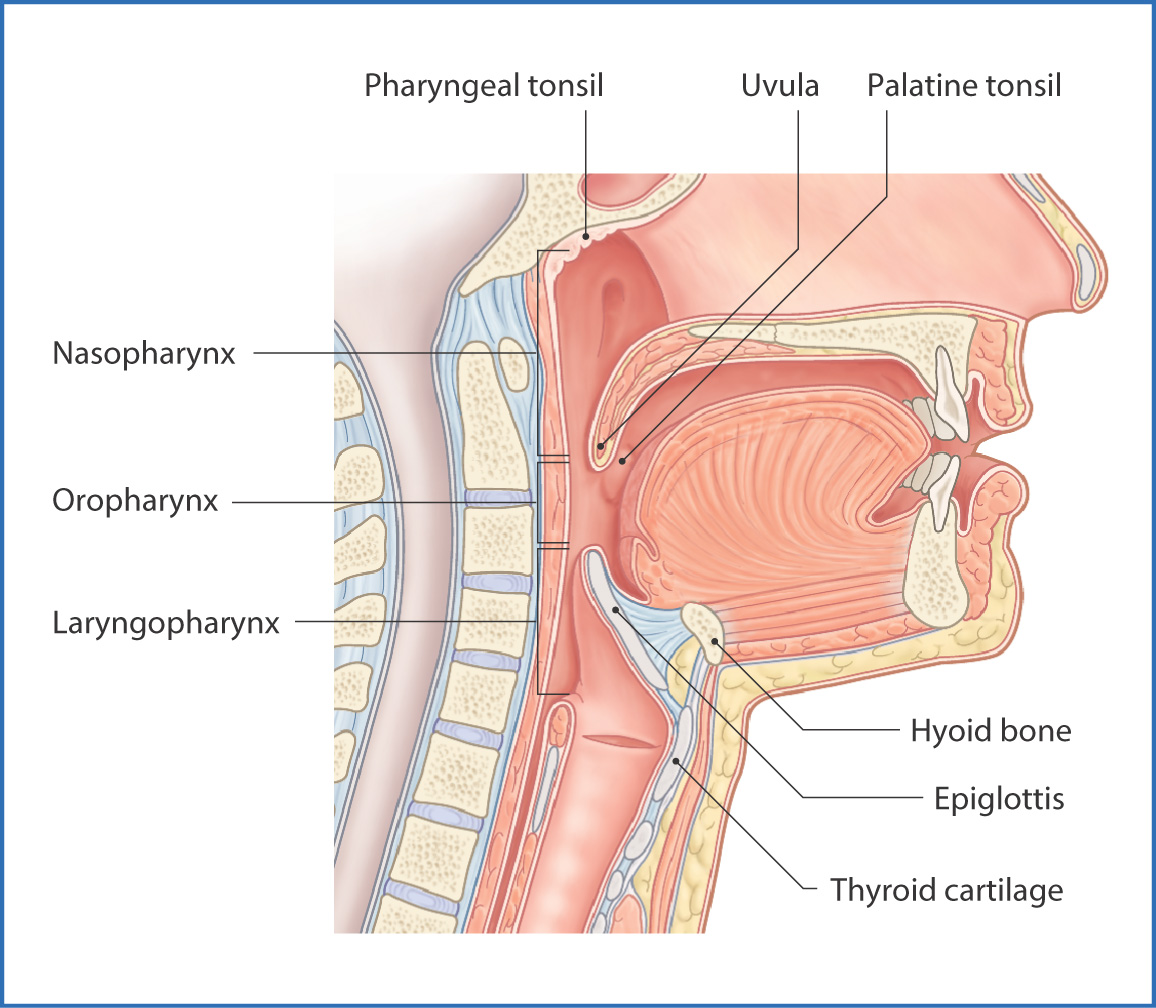The pharynx The pharynx is the region posterior to the nasal cavity oral cavity and larynx that extends from the base of the skull inferiorly until it becomes continuous with the esophagus. Terms in this set 10 outer circular layer of the pharynx-superior middle inferior constrictors-involuntary constricts pharynx to propel downward during swallowing.
 Pharynx Hd Stock Images Shutterstock
Pharynx Hd Stock Images Shutterstock
This chart of the Pharynx and Larynx shows several views of both structures.

Pharynx and larynx diagram. The superior middle and inferior constrictor muscles. The larynx houses the vocal folds and manipulates pitch and volume which is essential for phonationIt is situated just below where the tract of the pharynx splits into the trachea and the esophagus. Pharynx epiglottis larynx esophagus.
The pharyngeal muscles include an external layer. Where is the Pharynx Located. INBDE- pharynx and larynx muscles.
The outermost layer is comprised of circular muscles that function as constrictors. Function in the Digestive system. It is made up of many tissues such as cartilage muscle and other soft tissues.
The pharynx permits the passage of swallowed solids and liquids into the esophagus or gullet and conducts air to and from the trachea or windpipe during respiration. Human digestive system - Human digestive system - Pharynx. The nasopharynx the oropharynx and the laryngopharynx.
Both air and food pass through the pharynx. In this image you will find Paranasal sinuses Nasopharynx Oropharynx Laryngopharynx Esophagus Entrance to the eustachian tube Nasal cavity soft palate Hard palate Oral cavity Tongue epiglottis Larynx Trachea in it. The nasopharynx is the uppermost part of the pharynx and extends down from the base of the skull to the nasal passages hence the name.
Each illustration is finely detailed and labeled. Pharynx and larynx are two structures found in the neck region of vertebrates. It starts at the epiglottis and ends in the cricoid cartilage.
The pharynx also connects on either side with the cavity of the. Muscular Components of the Pharynx With respect to the muscles that make up the pharynx on a microscopic level there are two muscular structures. The foodbolus is carried to the stomach via esophagus food pipeThe tongue along with the soft palate pushes the food forward into the pharynxThe pharynx closes off the trachea with the help of a cartilaginous flap called epiglottis during swallowing.
The throat comprises of air and food passageways lying behind the nasal cavity and mouth and in the neck. Pharynx is the 4-5 inches long semicircular fibromuscular tube commonly referred to as the throat that connects the nasal cavity to the larynx and the oral cavity to the esophagus 2 3. The larynx ˈ l æ r ɪ ŋ k s commonly called the voice box is an organ in the top of the neck involved in breathing producing sound and protecting the trachea against food aspiration.
The pharynx or throat is the passageway leading from the mouth and nose to the esophagus and larynx. For more anatomy content please follow us and visit our website. The pharynx consists of three major sections.
We are pleased to provide you with the picture named The Larynx And Vocal Cord DiagramWe hope this picture The Larynx And Vocal Cord Diagram can help you study and research. Is a health blogger focusing on health beauty lifestyle and fitness topics. This diagram shows the structures of the throat for a child.
We are pleased to provide you with the picture named Anatomy of the pharynx diagram. It consists from the top to the bottom of the pharynx epiglottis larynx voice box with vocal cords and the upper part of the esophagus and trachea Picture 1. The pharynx is the part of the digestive system which acts as a common pathway for air and food.
The pharynx chamber serves both respiratory and digestive functions. Anatomy of the pharynx diagram. Thick fibres of muscle and connective tissue attach the pharynx to the base of the skull and surrounding structures.
Pharynges is the part of the throat behind the mouth and nasal cavity and above the esophagus and trachea the tubes going down to the stomach and the lungsIt is found in vertebrates and invertebrates though its structure varies across species. It receives food from the mouth. In vertebrate anatomy the throat is the front part of the neck positioned in front of the vertebraIt contains the pharynx and larynxAn important section of it is the epiglottis separating the esophagus from the trachea windpipe preventing food and drinks being inhaled into the lungsThe throat contains various blood vessels pharyngeal muscles the nasopharyngeal tonsil the tonsils.
The pharynx carries food and air to the esophagus and larynxThe flap of cartilage called the epiglottis stops food from. It also plays a vital role in channeling swallowed food into the esophagus as the epiglottis covers the entrance to the larynx keeping food and drink from entering the. The main difference between pharynx and larynx is that pharynx is a part of an alimentary canal which extends from the nasal cavity and mouth to the larynx and the esophagus whereas larynx is the upper portion of the trachea.
The diagram above illustrates these three areas or sections of the pharynx. Posterior view of the pharynx and surrounding structures sagittal section of the pharynx and surrounding structures deep side view of the pharynx and surrounding structures. Throat cone-shaped passageway leading from the oral and nasal cavities in the head to the esophagus and larynx.
During inhalation air enters through the nasal cavity and mouth traveling through the pharynx larynx and bronchi the two primary branches of the trachea to finally reach the lungs 15. The Throat anatomy diagram divides the pharynx into three parts the nasopharynx the oropharynx and the laryngopharynx.